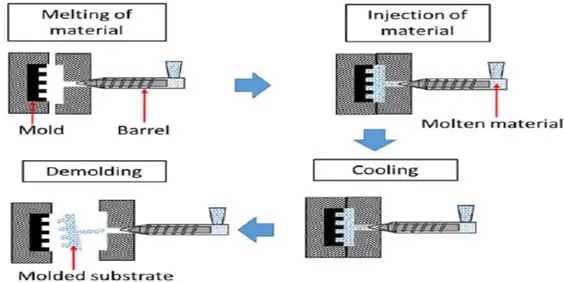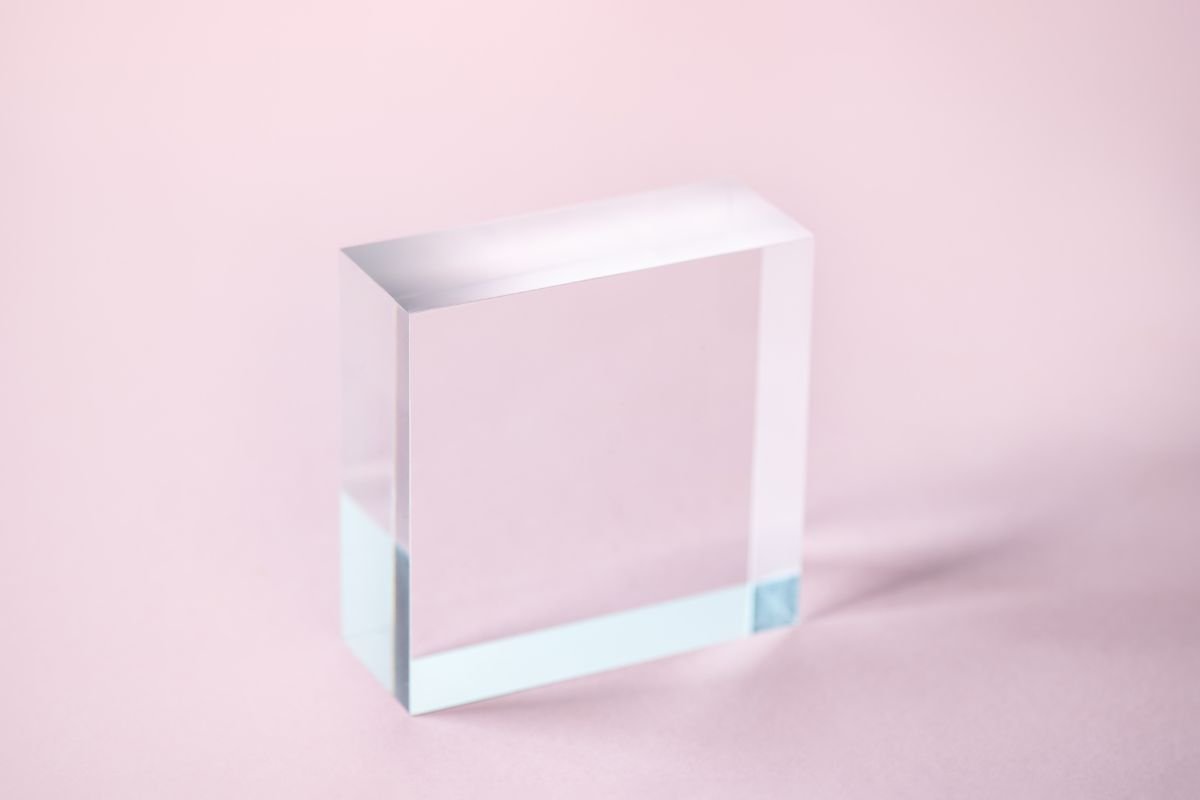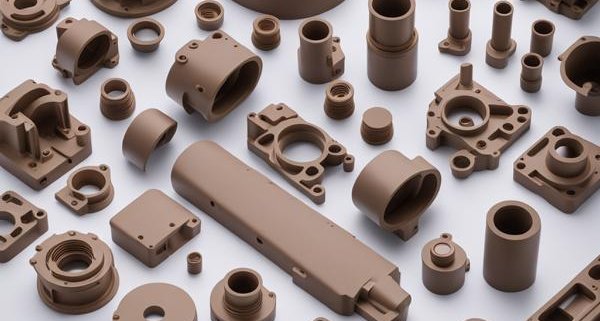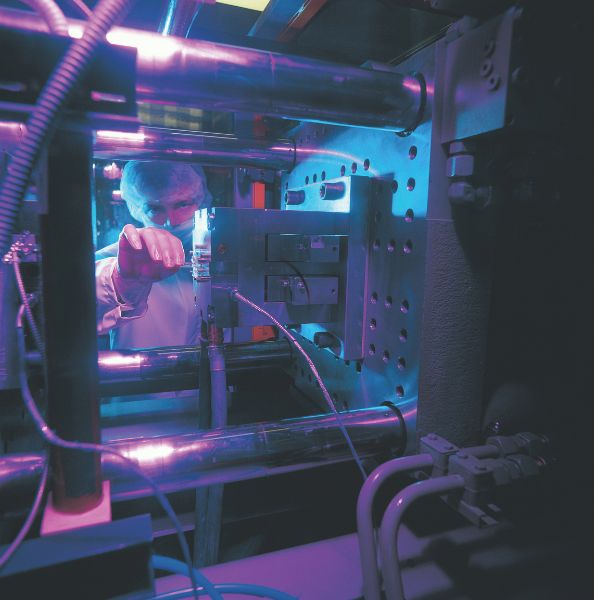What is 2 plate injection mold
2 plate injection mold or two plate injection mold is a type of injection molding tool used in the manufacturing process to produce plastic components or products. It is a fundamental and widely used mold design in the plastic injection molding industry. The name “2 plate” refers to the mold structure, which consists of two main plates (A plate and B plate) that come together during the molding process.
Components of a 2 Plate Injection Mold
The two-plate injection mold is one of the most popular types of molds used in the business world. A 2-plate injection mold has numerous critical components that help in plastic injection molding. Each part affects the ultimate product. The main parts of a 2-plate injection mold are:
There are two main plates that make up an injection mold with two plates. These plates are the empty plate and the core plate. These plates, which go on the base of the cast, make up the mold’s body and core. Inside the mold, the inner plate shapes the part, and the hollow plate shapes the outside. After these plates are put together, the shape of the plastic part is set.
There are more parts to a two-plate injection mold than just the hole and core plates. The cooling system, ejector pins, runner system, and sprue bushing are some of these. One of these parts is the running system. The sprue bushing is a tiny hole in the mold that lets the plastic melt. The runner system has several tubes that move the plastic from the bushing on the sprue to the area with the holes. If you use ejector pins after the part has cooled and hardened, you can push it out of the mold. It is the job of the cooling system to keep the mold at the right temperature so that the plastic sets properly.
A two-plate injection mold also has very important parts called guide pins and bushings. These parts help make sure that the hole and core plates are lined up correctly during rolling. The way these parts look makes it clear that the two plates will be put together properly, which results in a high-quality part. The mold might also have slides, lifters, and plugs that are used to give the plastic part complicated shapes and features.
Most of the time, a two-plate injection mold’s parts work together to make high-quality plastic pieces quickly and correctly. To get better results and more regular production, makers need to fully understand how each part works and how it impacts the molding process. The technology is always getting better, so it’s likely that injection casting and mold design will take more big steps forward. These new thoughts will help make the process of making plastic parts even better and faster in the long run.
Working steps of 2 plate injection mold
The operation of a 2 plate injection mold is pretty much the same like other injection molds, like 3 plate injection mold, hot runner mold. Below are some of basic working steps of a 2 plate injection mold:
First Step: Make a mold. When working with an injection mold that has two plates, the first step is to build the mold. This requires making a detailed plan of the mold that shows the size, shape, and properties of the part that will be made. The design of the mold also includes how the hollow and core plates are arranged, as well as where the injection gate and cooling channels are placed.
Second step. Making the mold is the next step, which comes after the mold design has been approved. The cavity and core plates are cut out of high-quality steel using computer numerical control (CNC) tools in this process. To make the plates fit perfectly into the mold during the injection molding process, they are carefully polished. This makes sure that the plates will fit perfectly on the mold and that everything will go smoothly.
Third step is putting it all together. As soon as the hollow and core plates are finished being machined, they are put together to make the 2-plate injection mold. The plates are lined up and then tightly held in place with bolts and clamps to make sure they stay where they’re supposed to be during the injection molding process. After this step, the model is attached to the injection molding machine, which is then made ready to start making the product.
Step 4: An injection mold is made. Once the model has been put together and attached to the machine, the injection molding process can begin. The plastic is put into the machine’s hopper, where it is heated and melted until it becomes a liquid. After that, the injection gate is used to put the molten plastic into the mold hole. These steps fill the hole with plastic, which makes the part take on the shape of the mold.
When it comes to the fifth step, cooling and ejection: After all of the liquid plastic has been poured into the mold, the cooling process will begin. This is done by adding cooling tubes to the mold so that the plastic can cool quickly and harden into the right shape. The mold is opened up after the part has hit the right temperature and solidified. Ejector pins or plates are then used to push the part out of the mold cavity.
Step 6. Controlling and making sure quality As soon as the part is taken out of the mold, it goes through quality control checks to make sure it meets the requirements. Some things that might fall into this group are checks for size, visual inspections, and tests for power and durability. Any mistakes or flaws that might have been there are found and fixed to make sure that the end product meets the quality standards that were set.
For a two-plate injection mold to work well, it needs to be carefully planned, built, put together, injected, cooled, ejected, and quality checked. In the end, these are the steps for using the mold. If makers pay close attention to these steps, they can use injection molding technology to make high-quality plastic parts quickly and cheaply.
Advantages of 2 plate injection mold
Due to its many advantages over other types of molds, the two-plate injection mold has become a popular option. For your next project, a two-plate injection mold could be the ideal choice, and in this piece we’ll look at the advantages of using one.
First and foremost among the many benefits of a two-plate injection mold is how simple and intuitive it is to use. In this specific mold design, two plates are used to construct the mold’s cavity and key. This makes it easier to set up and run, since there aren’t any complex systems or moving parts that could break. This lack of complexity not only makes the mold easier to work with, but it also makes it less likely that anything would go wrong when shaping the material.
An additional perk of utilizing a two-plate injection mold is the fact that it is more economical. In most cases, 2 plate molds are less expensive to make and keep in good working order than other mold types. The simplicity of their design is largely responsible for this. This might lead to cost reductions for manufacturers, especially for smaller to medium production runs. Moreover, due to the straightforward mold design, manufacturing cycles can be accelerated, resulting in even more cost savings and improved overall efficiency.
Besides being cost-effective, two-plate injection molds offer a plethora of design and modification possibilities, which greatly enhances their versatility. Making a finished product with a wide range of sizes, forms, and qualities is as easy as adjusting the two plates. Because of this adaptability, the design process can be more creative and innovative, and according to the situation, modifications or revisions can be made quickly. Injecting a product using a two-plate mold allows for a great deal of design flexibility. This is true whether you are creating intricate, detailed designs or more basic geometric shapes.
Also, the high degree of accuracy and precision with which two-plate injection molds function is legendary. The ease with which the two plates can be put together ensures that the final product will be of consistently high quality. Having this degree of accuracy is crucial for making products that meet the demanding standards of the industry. No matter what kind of plastic product you’re making—medical equipment, vehicle parts, consumer items, etc.—a two-plate injection mold can help you reach the degree of accuracy and quality your customers need.
Using a two-plate injection mold clearly has several advantages, all things considered. If you’re a manufacturer looking to make high-quality plastic goods, this mold is a great investment. Among these benefits are its adaptability, accuracy, low price, and ease of use. Be sure to look into the advantages of a two-plate mold and how it might help you achieve your production goals if you are considering using injection molding for your next project.
Limitations and Considerations of 2 plate injection mold (two plate injection mold)
Although there are a number of benefits to using two plate injection molds, producers should be mindful of the constraints and limitations that come with these tools. If you want to know if 2 plate molds are right for your application, you need to know these things. Some things to keep in mind and limitations of 2 plate injection molds are as follows:
One issue with two-plate injection molds is that they can’t make complicated parts with bends or features. Complex parts that require more than one slide or core can be difficult to make because the mold only opens one way. This can make building parts with interesting shapes or features harder.
Consider parting line flash when using two-plate injection molds. When mold halves don’t match, extra material leaks out. This is parting line flash. The joining edge may have extra fabric. This may need to be removed or cut after shaping. Mold making and maintenance must be done properly to reduce parting line flash and produce high-quality parts.
Making many parts or parts with strict standards may not be possible with this mold. How these molds are made may increase cycle times and lower part consistency. This applies especially to complex parts that require precise casting conditions. For precise and consistent work, you may need a hot runner or multi-cavity mold.
Despite these issues, 2 plate injection molds are popular for many injection molding jobs due to their many benefits. They are cheap for small to medium production runs because they are easy to make. Simple 2 plate molds are easy to change and maintain. This reduces downtime and boosts efficiency.
Remember that two-plate injection molds have issues but are still useful for many injection molding tasks. If the moldmakers anticipate the issues and build them accordingly, they can use 2 plate injection molds to make good plastic parts. Build the mold well, maintain it, and monitor the process. This gives the most consistent and reliable results from 2 plate injection molds.
Difference between 2 plate injection mold and 3 plate injection mold
The primary difference between a 3 plate injection mold and a 2 plate injection mold is the number of plates and their configuration. Both mold types are used in plastic injection molding but have little different in the mold design, normally 3 plate mold will be more cost than 2 plate mold. below are some of the key differences between 3 plate and 2 plate injection molds:
2 Plate Injection Mold:
A mold for putting A lot of people use two-plate molds, which are the most basic. It is made up of two main plates: the core plate and the cavity plate. In injection molding, these plates are used to make a parting line that lets the mold open and close.
Important features:
Because the mechanism is simpler, it is easier to plan, build, and keep up.
It costs less to make and run 2-plate molds than 3-plate molds because they are simpler to use.
You can better plan the spot where the molten plastic enters the cavity if you use a direct gate, but the finished product is more likely to show gate marks.
With undercuts and gate marks, this is a great tool for making parts that don’t need a lot of thought.
3 Plate Injection Mold:
A two-plate mold isn’t as useful or easy to use as a three-plate mold. There is an extra plate called the runner plate that fits between the cavity and core plates. The parting line and the runner system can be set up on different planes. The runner system moves the plastic melt into the parts of the mold.
Important features:
Better Style: The process of separating parts from runners is automated when you add an extra plate. This lets you make parts with more complicated patterns.
Better efficiency in making lots of things Because it has three plates, the Part and Runner System can be split up automatically.
Submarine Gate or Pin-Point Gate: The gates are set back from the part, which lets you place them better and hides the marks that show where the gates should be.
This is a great tool for complicated parts that need to be precisely placed with gates or have their runners separated automatically. Wonderful for parts that have a lot of gates or markings on them that you don’t want to show.
Key Differences
These things change price and difficulty: Three-plate molds have more moving parts and cost more to make. Two-plate molds are easier to make and cost less because they only have two plates instead of three.
Quality of the Gate and Parts: With 3-plate molds, you can move the gates around, which makes the parts look better and hides the gate marks better.
Runner Method: Three-plate molds are much better for mass production because they can automatically separate runners from parts. On the other hand, runners have to be taken out by hand from two-plate molds.
The main things that decide whether a 2-plate or 3-plate injection mold is better are how complicated the part is, how it looks, and how many of them need to be made. Each option has pros and cons, and the project needs should guide your choice.
Sincere Tech is one of the best China mold companies that server all of custom plastic injection molding. We are experts in the most up-to-date two-plate injection molds, aluminum die casting molds, three-plate molds, and other types of plastic injection molds. As one of the best mold makers in China, we are dedicated to providing our customers with the best plastic injection molds and related services.
Our experienced team of professionals is committed to giving you custom solutions that meet all of your specific needs. Our website has a smooth, easy-to-use interface that makes it easy to find the products and services related to two-plate injection mold that you are looking for.
Sincere Tech provides a wide range of services, including making plastic molds, custom plastic injection molding, rapid prototyping, mold design, post-manufacturing services, assembly, and on-time delivery. Because we know so much about two-plate injection molds, we are the leaders in our field and can make sure that your projects use the newest advances in molding technology.
At Sincere Tech, we’re proud to work with customers from the beginning of a project to the end. Whether you need a single prototype or are starting a large-scale production run with two plate injection mold, our dedicated team is ready to answer any questions you have and help you through the whole process.
We’re sure that our excellent service, deep technical knowledge, and wide range of resources will help your business reach new heights. Don’t wait; get in touch with us right away if you need reliable, low-cost, and high-quality 2 plate injection mold suppliers. We look forward to working with you and helping your projects succeed more than anything else!
















